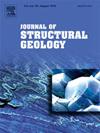Ontong爪哇高原的俯冲:沿西美拉尼西亚海沟的前弧地震反射成像的启示
IF 2.9
2区 地球科学
Q2 GEOSCIENCES, MULTIDISCIPLINARY
引用次数: 0
摘要
Ontong爪哇高原(OJP)是世界上最大的海洋高原,因其沿西美拉尼西亚海沟和北所罗门海沟的俯冲而备受关注。根据首次观测的多道地震(MCS)和多波束资料,我们发现沿西美拉尼西亚海沟的弧前区被一系列正断层控制,表明该海沟是一个侵蚀俯冲带。在向海倾斜的正断层控制下,弧前区呈现向海沟逐渐下降的地形特征,可分为上斜坡、中斜坡和下斜坡。然而,弧前区部分地区可能受上下板块界面的底板双重变形影响,形成了弧外高地,改变了早期构造地层结构,并形成了一系列向前倾的正断层。我们认为,新爱尔兰岛和西美拉尼西亚海沟之间的弧前区域总体上表现出强烈的伸展,这与所罗门群岛以东的弧前区域的逆冲-叠瓦拼贴形成鲜明对比。这一延伸表明,在太平洋板块和新爱尔兰岛之间没有相对运动,不活动海沟中很少发生地震,表明有浮的东太平洋板块并没有沿西美拉尼西亚海沟俯冲到新爱尔兰岛之下,而可能只与上覆的岛弧系统重合。本文章由计算机程序翻译,如有差异,请以英文原文为准。
Subduction of the Ontong Java Plateau: Insights from seismic reflection imaging of the forearc along the West Melanesian Trench
The Ontong Java Plateau (OJP), as the largest oceanic plateau in the world, has drawn much attention because of its subduction along the West Melanesian Trench and the North Solomon Trench. Based on the first observed multichannel seismic (MCS) and multibeam data across the northwestern margin of the OJP, we show that the forearc region along the West Melanesian Trench is dominated by a series of normal faults which show this trench as an erosive subduction zone. Under the control of the seaward-tilting normal faults, the forearc region presents the topographic characteristics of gradually descending toward the trench and can be divided into the upper slope, middle slope and lower slope. However, some areas of the forearc region may be affected by underplating duplex deformation at the upper/lower plate interface, which leads to the formation of the outer-arc high and modification of the early tectono–stratigraphic structure, along with a series of arcward-tilting normal faults. We suggest that the forearc region between New Ireland Island and the West Melanesian Trench generally exhibits a strong extension, which is in sharp contrast to the thrust-imbricate collage of the forearc region east of the Solomon Islands. The extension indicates that the buoyant OJP is not subducted beneath the New Ireland Island along the West Melanesian Trench but may be collocated only with the overriding island arc system, as evidenced by no relative motion between the Pacific Plate and the New Ireland Island Arc and few earthquakes in the inactive trench.
求助全文
通过发布文献求助,成功后即可免费获取论文全文。
去求助
来源期刊

Journal of Structural Geology
地学-地球科学综合
CiteScore
6.00
自引率
19.40%
发文量
192
审稿时长
15.7 weeks
期刊介绍:
The Journal of Structural Geology publishes process-oriented investigations about structural geology using appropriate combinations of analog and digital field data, seismic reflection data, satellite-derived data, geometric analysis, kinematic analysis, laboratory experiments, computer visualizations, and analogue or numerical modelling on all scales. Contributions are encouraged to draw perspectives from rheology, rock mechanics, geophysics,metamorphism, sedimentology, petroleum geology, economic geology, geodynamics, planetary geology, tectonics and neotectonics to provide a more powerful understanding of deformation processes and systems. Given the visual nature of the discipline, supplementary materials that portray the data and analysis in 3-D or quasi 3-D manners, including the use of videos, and/or graphical abstracts can significantly strengthen the impact of contributions.
 求助内容:
求助内容: 应助结果提醒方式:
应助结果提醒方式:


